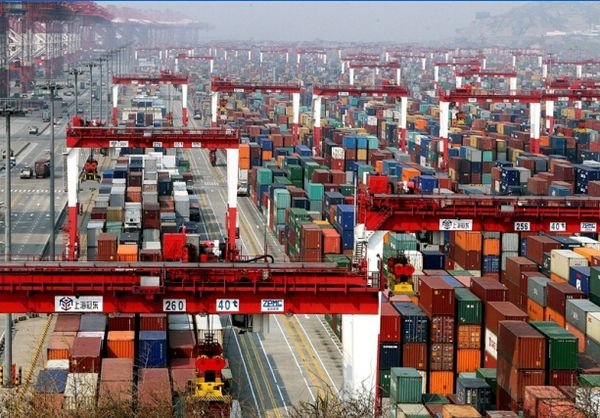第23周航运市场动态

海 运 市 场
亚洲 → 北美(跨太平洋东行航线)
船期可靠性仍然面临挑战,因为承运人仍需努力克服奥克兰等极度拥堵的港口的延迟停泊问题。发运港新冠疫情的爆发导致劳动力中断,并促使一些航线暂停停靠盐田港,很可能会造成未来几周货物积压。可用舱位有限、大量停航、拥堵和临时港口停靠/取消造成的干扰与强劲需求的叠加意味着跨太平洋东行航线 (TPEB) 面临巨大挑战。
价格: 6 月 1 日已实施 GRI,6 月 15 日预计实施 GRI
舱位: 紧张
运力/设备: 紧张/严重低于运力
建议: 在货好日期前至少 4-6 周订舱。
亚洲 → 欧洲(远东西北欧航线)
舱位和设备短缺问题仍在继续。市场上的需求超出供给。6 月/7 月停航次数将会增加,设备状况没有改善。承运商方面积压严重,无法受理更多订舱。盐田港的限制和拥堵导致运输受到更多影响。首批联盟从盐田分流到南沙和蛇口等替代港口。
价格:6 月 1 日大幅上升,6 月 15 日和 7 月将进一步上升。
舱位:舱位情况极度紧张
运力/设备:所有亚洲发运地均发生严重设备短缺
建议:在货好日期前至少 4-5 周订舱。可以考虑有限的优先运输方案。灵活使用替代设备。
欧洲 → 北美(跨大西洋西行航线)
由于运力仍然供不应求,新的价格上调于 6 月生效。
价格:预计 7 月份的运价将进一步攀升。
舱位:紧张,所有服务均面临高需求。
运力/设备:由于承运商为将航次恢复正常实行了一系列停航和跳港,运力受到影响。船期可靠性正在改善,但仍低于 35%。北欧港口的设备供应情况略有改善,但内陆堆场在中期内仍将继续面临设备短缺问题。
建议:在货好日期前至少 5 周订舱。如需运输对可靠性要求更高的货物,请申请优先运输服务。
印度 → 北美
该地区的新冠疫情限制正在放宽,港口拥堵正在导致下游延迟。自从该地区最近采取新冠疫情限制以来,制造业和出口已经放缓,导致舱位短期缓解现已结束。我们预计整个夏季都将面临舱位难题。由于船期可靠性,主要基地港和转运港的拥堵正在导致承运人利用舱位清理货物积压,进一步增加了新订舱寻找舱位的难度。印度南部和斯里兰卡科伦坡的积压情况最令人担忧。
价格:6 月上半月已实施 GRI 前半部分,6 月下半月预计将实施后半部分
舱位:发往美西和加拿大的舱位紧张
运力/设备:设备短缺问题正在缓解。印度南部仍然面临挑战
建议:为急件和马上临近货好日期的货物预订优先运输服务
北美 → 亚洲
货轮延迟和停航继续压缩运力。美国西海岸受运力损失的影响仍然最大。由于承运商正在优先运回空箱,情况雪上加霜。
价格:预计 7 月 1 日将上调季度 BAF 水平。目前的 GRI 建议主要限于冷冻柜货运。
舱位:美东和美西发运地舱位紧张。美国墨西哥湾开始运行一项新服务,其运力将显著提升。
运力/设备:美东和美西发运地运力紧张。大部分港口和所有堆场的设备和底盘车供应紧张。
建议:提前 4 周以上订舱。
北美 → 欧洲
美国和欧洲的拥堵压缩了可用运力。海运承运商实行了一系列跳港操作以恢复货轮航次,导致了新一波的积压。
价格:保持稳定,但由于 7 月 1 日 BAF 调整,预计价格将随之上升。
舱位:美国西海岸发运地舱位紧张。由于船舶延误造成的舱位损失,美国东海岸几家海运承运商的运力管理更加紧张。
运力/设备:美东港口设备供应充足,但铁路堆场设备供应非常紧张。
建议:建议美东发运的货物提前 4 周以上订舱,美西发运的货物提前 5-6 周以上订舱。
空 运 市 场
亚洲
本周随着需求和运力渐趋稳定,亚洲以外的市场(包括 TPEB 和 FEWB)略微降温。
需求 - 在需求方面,包括 TPE、SGN、BKK、KUL 等在内的许多发运地爆发新冠肺炎疫情,促使当地官员实施区域封锁,影响了工厂产出和流向机场的运量。
运力 - 随着对机组人员限制的解除,一些亚洲承运商增加了其货运机队的运力,其中最引人注目的是中华航空公司。国泰航空也宣布恢复 90% 的计划货运航班,带来一场及时雨。
随着新冠疫情限制在本月月中前解除,大多数地方的工厂产出恢复正常,这些市场状况预计将恢复短暂活力。各大托运人在第二季度末之前为达目标而加速出货是另一个临时因素。随着 6 月底的到来,我们预计 TPEB 的空运市场将非常紧张,而 FEWB 市场的紧张程度则略低。
更多的海运转空运和特殊项目即将到来,这将使整个夏季的空运市场保持非常强劲。
欧洲
欧洲出口至南北美洲和亚洲的需求继续显示出强劲势头。发往美国西海岸的舱位依然紧张。在过去的一周里,发往北美的运力并无切实增加,尽管一些承运人表示要增加跨大西洋贸易的运力。发往亚洲的舱位利用率仍然很高,特别是发往中国、日本和印度次大陆(主要是救援物资)的舱位。
欧洲的主要枢纽机场及次级机场的进口和出口吞吐量正常。
美洲
尽管在某些欧洲市场有所缓和,但由于客机腹舱带货运力持续缺位,出口舱位利用率依然很高。发往欧洲主要目的地的货物(主要是从美国西海岸发出),从订舱到起飞可能需要 2-3 天时间。美国西海岸门户机场发往欧洲的运力最为紧张,而美国中西部和东海岸的运力处于非常可控的水平。尽管抢占速度不及最近几周,从美国西海岸发往亚洲的运力爆满。
发往印度、尼泊尔、孟加拉国的舱位仍然非常紧张,因为该地区疫情严重,有大量救援物资等待运抵——目前发往印度的舱位已售罄至 6 月中下旬。
由于亚洲和欧洲发来大量货机航班,洛杉矶国际机场 (LAX) 和芝加哥奥黑尔国际机场 (ORD) 地勤正面临货物积压,并在使用机场外设施应对涌入的货物。据报道,地勤人员分理入境航班货物的滞后期高达 3-6 天。
支持机场恢复和本地运送的卡车运力依然稀缺,尤其是在美国西海岸。
其 他 新 闻
工厂产量新闻
韩国 经济正在温和复苏,出口保持良好态势,消费低迷的情况有所缓解
日本 正在对所有新抵达的外国人(日本外籍居民除外)关闭边境,直到进一步通知,并预计在 9 月底前收到足够的疫苗供全国人口使用
越南 正在谋求通过购买疫苗生产技术和在该国自建工厂来建立疫苗计划
菲律宾 场热带风暴袭击了菲律宾南部和中部,许多村民流离失所。乘客和货物处理人员被困在海港。一艘小货船在开始进水时遭到船员抛弃。
印度 随着新冠肺炎感染病例数量回落,印度一些邦正在放松封锁限制。6 月 6 日记录到 114,460 个病例,达到两个月以来的最低记录。
孟加拉国 5 月份的出口以创纪录的速度增长,同比增长 112%。成衣的出口收入占孟加拉国出口的 84%,在 2020-2021 财年的前 11 个月中,成衣出口收入猛增了 11.1%。
孟加拉国 将把新冠疫情封锁期延长了 10 天,至 6 月 16 日。
斯里兰卡 将把新冠疫情封锁期延长了 7 天,至 6 月 14 日。
巴基斯坦 将减少部分进口税,以推动增长。重点减税对象是原材料,以促进制造业的发展。
Flexport 首席经济学家 Phil Levy 博士提供的重大经济事件
欧元区 5 月通胀率上升欧元区 5 月的估计通胀率为 2.0%,值得注意的是,这比 4 月的 1.6% 有所上升,并达到了欧洲央行的目标通胀率。这一数字随着能源价格飙升而水涨船高。
全球价格上涨对于一系列更广泛的国家而言,一个月前,经合组织测得其成员国 4 月份的通货膨胀率为 3.3%,是 2008 年 10 月以来的最高水平。另外,联合国世界食品成本指数达到了近十年来的最高水平。
美国成本核算增加单位劳动成本的涨幅大大超过第一季度的最初估算。广义非农成本年增长率上升 1.7%,而制造业成本上升 10.7%。
欧盟零售销售下降欧盟零售销售继 3 月份的增长后在 4 月下降。欧元区和欧盟的零售贸易下降 3.1%,但德国和法国分别下降 5.5% 和 6.0%。
